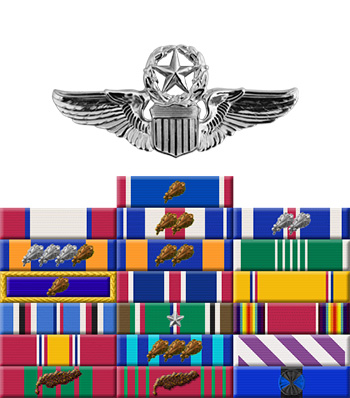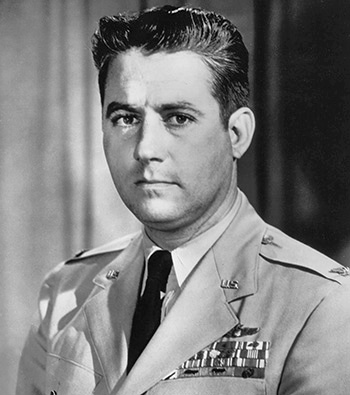
|
David C. Schilling |
 |
|||
| Rank, Service | ||||
Colonel O-6, U.S. Air Force |
||||
| Veteran of: | ||||
|
||||
| Tribute: | ||||
David Schilling was born on December 15, 1918, in Leavenworth, Kansas. He enlisted as an Aviation Cadet in the U.S. Army Air Corps on August 9, 1939, and was commissioned a 2d Lt and awarded his pilot wings at Brooks Field, Texas, on May 12, 1940. During World War II, Schilling served with the 56th Fighter Group in Europe, where he commanded the 62nd Fighter Squadron from January to October 1943, and then became the Group Executive Officer for the 56th FG from August 1943 to August 1944. Col Schilling served as Commander of the 56th FG from August 1944 to January 1945, followed by service as a staff officer in England from January to May 1945. During the war, Col Schilling was credited with the destruction of 22.5 enemy aircraft in aerial combat. His next assignment was on the staff at Headquarters Army Air Forces in the Pentagon from May 1945 to April 1946, and then with Headquarters Strategic Air Command at Bolling Field, Washington, D.C., from March to April 1946. Col Schilling served as Commanding Officer of the 56th Fighter Group at Selfridge AFB, Michigan, from April 1946 to October 1948, and then as a Staff Planning Officer with Headquarters U.S. Air Force in the Pentagon from November 1948 to April 1951. His next assignment was as Commanding Officer of the 31st Fighter-Escort Wing (renamed the 31st Strategic Fighter Wing in January 1953) at Turner AFB, Georgia, from May 1951 to May 1955, followed by service as Inspector General of 7th Air Division in England from September 1955 until his death in an automobile accident on August 14, 1956. In March 1957, Smoky Hill AFB, Kansas, was renamed Schilling AFB in his honor. David Schilling was buried at Arlington National Cemetery. |
||||
|
||||

